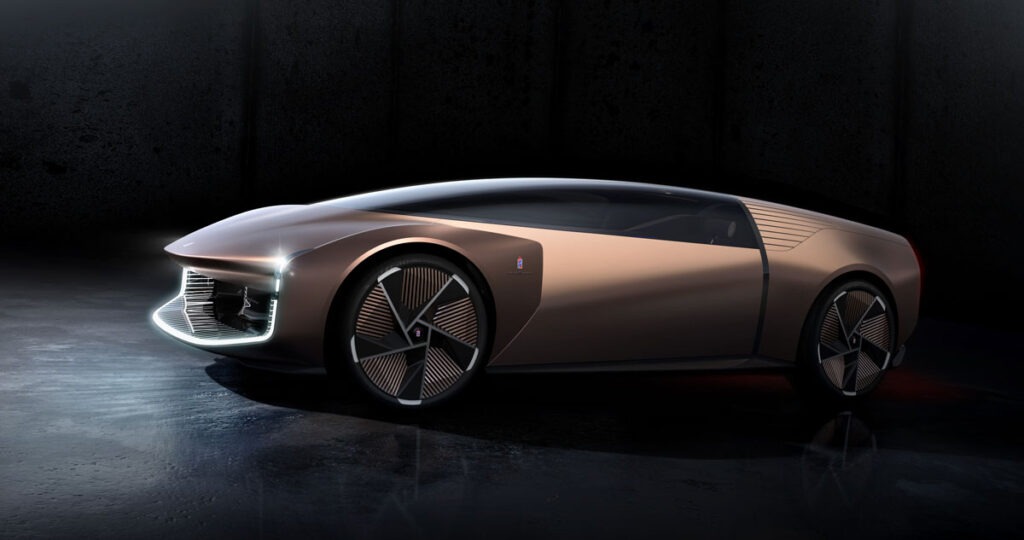
Turin, July 14, 2021 – Pininfarina paves the way to the future through a futuristic and daring Virtual Concept Car, TEOREMA, completely developed by using VR technologies. An all-new interpretation of fully electric, autonomous mobility in the name of user experience and technology, studied to create a sense of community and foster interactions amongst passengers and the outdoor environment.
“Pininfarina has always looked to the future using concept cars as an innovation tool to chart the direction and introduce new visions in terms of usability and technology in the automotive industry – comments Chief Creative Officer Kevin Rice. – TEOREMA, in particular, wants to give people back the pleasure of living the car, driving and travelling, without the frustrations of increased congestion and other compromises, all while integrating AI, 5G and the latest technology to drive passengers towards new incredible experiences along the journey.”
As the expression of Pininfarina’s vision for a shared, hyper connected mobility of the future, TEOREMA was designed from the inside out. The design teams in Cambiano and Shanghai created the interior experience before developing the exterior, starting from an electric skateboard chassis which allows the car to have a comfortable large space on its inside. Over the course of the project, the Pininfarina Virtual Lab, which is integral part of the design process, employed Augmented Reality, Virtual Reality and also new Mixed Reality technology to explore different shapes, experiences and scenarios quickly.
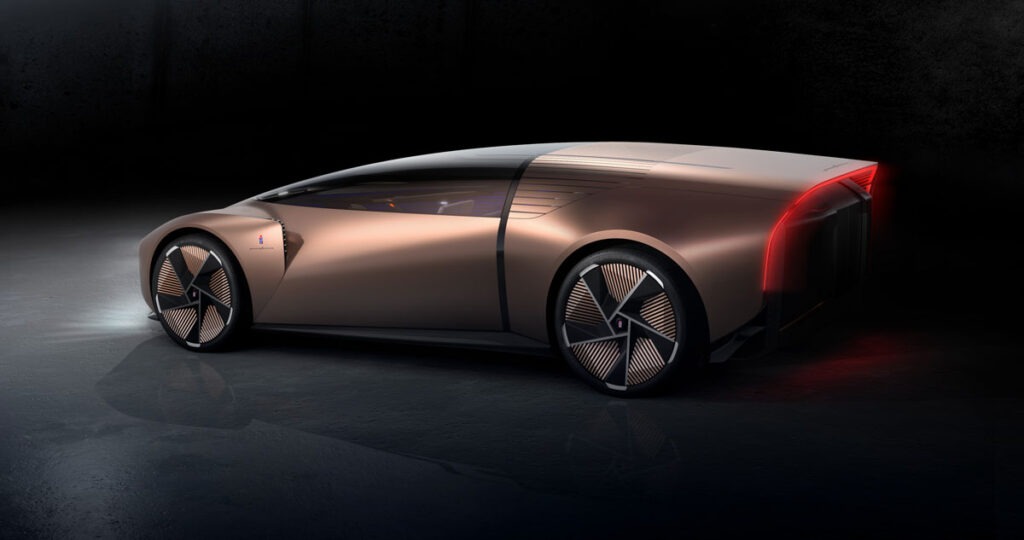
1400 mm in height and 5400 mm in length, TEOREMA is conceived both to allow passengers to share experiences along the journey and to provide moments of privacy when desired. Like entering a living room, getting inside the TEOREMA takes place by simply walking inside of it as the rear opens and the roof extends upwards and forwards, leaving ground to a foot-triggering floor that guides passengers to their seats.
Leveraging Pininfarina’s expertise in interior design and the search for wellbeing, TEOREMA provides an interior space that can be used in different ways and offers a completely new ease of movement inside the car. The occupants are positioned in a pentagon which creates the narrow cabin at the front and a wide body further back. A central, modular space similar to a home environment enables passengers to engage in different actions, moments and experiences including for example a private backspace where passengers can seclude to rest or sleep. The side of the car can be used as backrest when passengers want to, as there is no side entry, thus also making the car stiffer and lighter.
TEOREMA also embeds an innovative aerodynamic concept validated though CFD assessments, in light of Pininfarina’s unique experience enabled by its proprietary Wind Tunnel. When seen from above, TEOREMA is split into three separate parts. Between the central living space and the outside surface of each side of the car, open air channels allow air to stream through the whole vehicle. Duct sections smoothly decrease their area and this shape generates an acceleration of air flow passing through them. The high-speed jets that exit at the rear end of the car reduce the wake dimension improving the aerodynamic performance, helping reduce drag and improving the car’s efficiency.
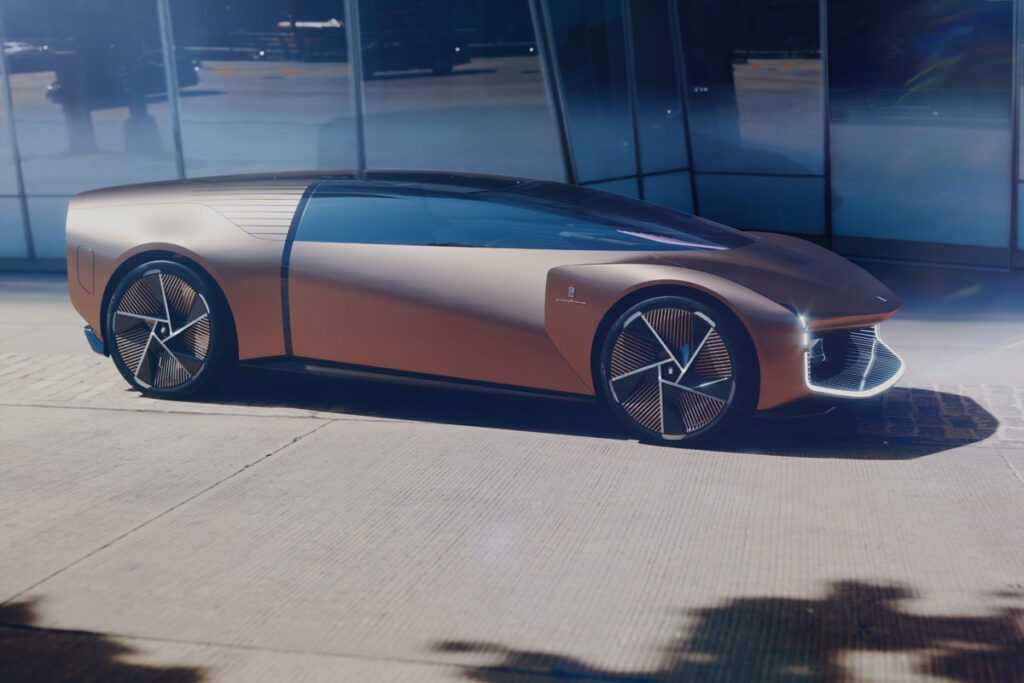
Even the exterior shape of TEOREMA is driven by technical concepts and the experiences the occupants should feel. As with all Pininfarina’s designs, purity, elegance and innovation are the foundations of the design of the TEOREMA, but this time the team wanted to create something sophisticatedly impressive despite using really simple forms, where the lack of side doors gives an unexpected styling lightness.
TEOREMA is completely autonomous but it can easily switch across different driving modes according to passengers’ preferences and the different driving situations: in AUTONOMY MODE, the vehicle is completely autonomous therefore needing no driver. The driver faces the other four passengers, leaving enough distance between to give everyone the feeling of having their own private cocoon. The DRIVE MODE guarantees a community feeling and everything that happens in the motion of the vehicle is shared. The different areas of the interiors become of the same color, providing a subconscious connection holding all the occupants to a shared experience. When the car is in REST MODE, the whole interior becomes a social space where people can move to any desired position. The internal environment and the smart seats automatically change to allow people to socialize or lounge.
Pininfarina’s Virtual Concept Car features different technologie integrated thanks to the collaboration of selected leading partners who worked together to deliver the most incredible passenger experience.
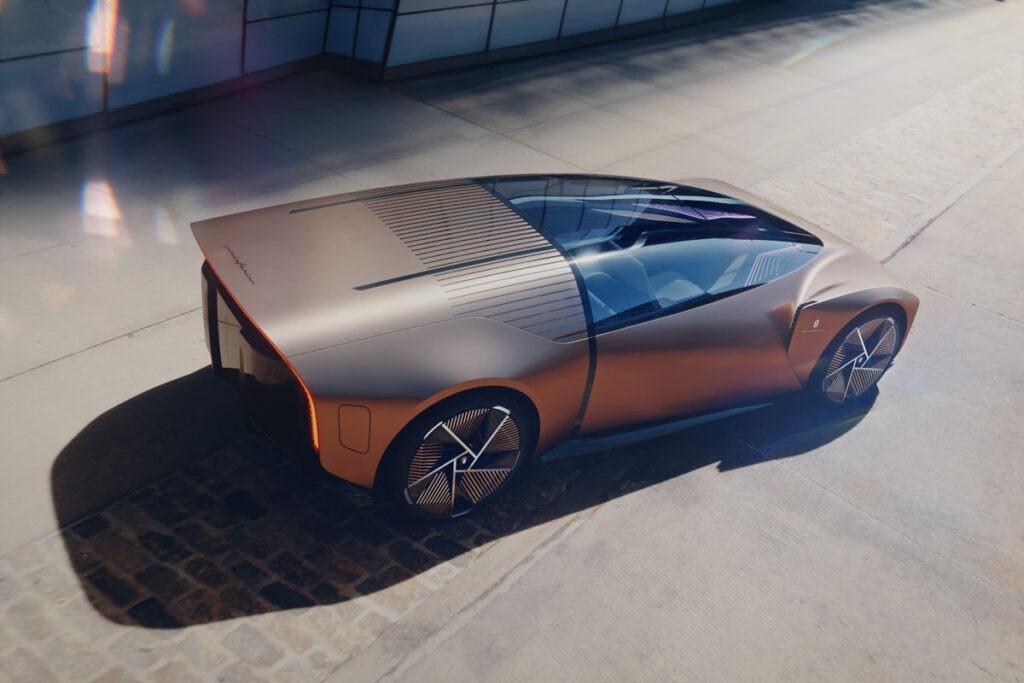
WayRay for True Augmented Reality – Crisp and vivid virtual images with unprecedented color depth are aligned with the real world and allow passengers to be informed about the relevant traffic information, the places of interest and curiosities. They appear behind the car’s windshield and side glasses. Passengers also have a possibility to interact with the information displayed in order to learn more or share it with other people onboard.
“Within the near future we will be getting a whole new visual experience while travelling. A seamless combination of the virtual world and the real one will provide a qualitatively new level of safety and comfort. This car may still seem futuristic to most of us but part of our technologies implemented in TEOREMA are already here and ready for mass production”, says Vitaly Ponomarev, Founder & CEO of WayRay.
Continental Engineering Services for Smart Surfaces and Intelligent Glass – Continental’s competences on Smart Surfaces and Intelligent Glass provides the Pininfarina Virtual Concept Car with important features in terms of both user experience and safety. Pop-up buttons are hidden under the car’s interior surfaces and only emerge when the driver passes his hand over them. Each button has a slightly different shape, allowing the driver to easily recognize them without taking the eyes off the road. The use of Smart Glass in the rear part of the car allows passengers to enjoy their privacy and to regulate the light that enters from the outside, giving then the possibility, also thanks to the foldable flat seats, to create a comfortable cocoon in which to rest.
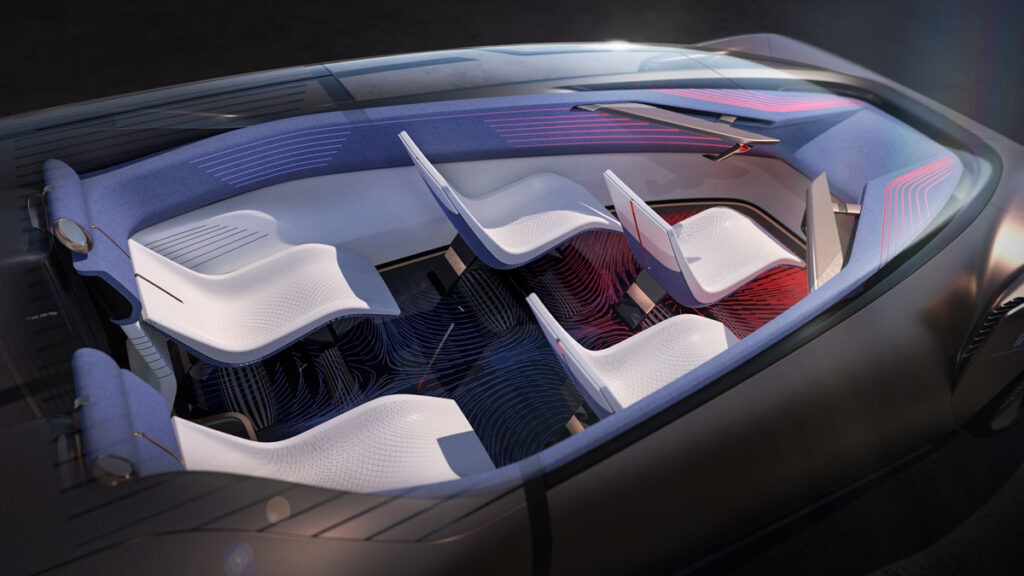
Poltrona Frau for Seats – The seats were designed together with Poltrona Frau to ensure maximum relaxation and to allow passengers to stretch out and dose off. The seats of TEOREMA are able to fold down flat, turning into a bench or a cot providing for the possibility either to face each other, in a moment of conviviality, or to lie down, during a more intimate time.
BENTELER for the Rolling Chassis – TEOREMA is based on a platform solution built on the BENTELER Electric Drive System (BEDS). This is a very efficient solution and an enabler for setting up new electric vehicles very fast, with reduced complexity and high quality, thanks to its scalable and modular design. With its low construction the Rolling Chassis allows the car to have space on its inside and still keep a relatively low height.
TEOREMA, a true demonstrator of Pininfarina’s skills in digital car development, which makes the design process faster and more efficient, will be the subject of presentations aimed at the Group’s Italian and international customers in the coming weeks.













Whats the point of this “virtual” concept car? Will it ever be produced? Maybe…but there are plenty of freelance designer who designed and render their creations. Pininfarina please get back to the roots and actually produce your cars and not virtually…
An EV virtual concept car? You mean a virtual Microwave